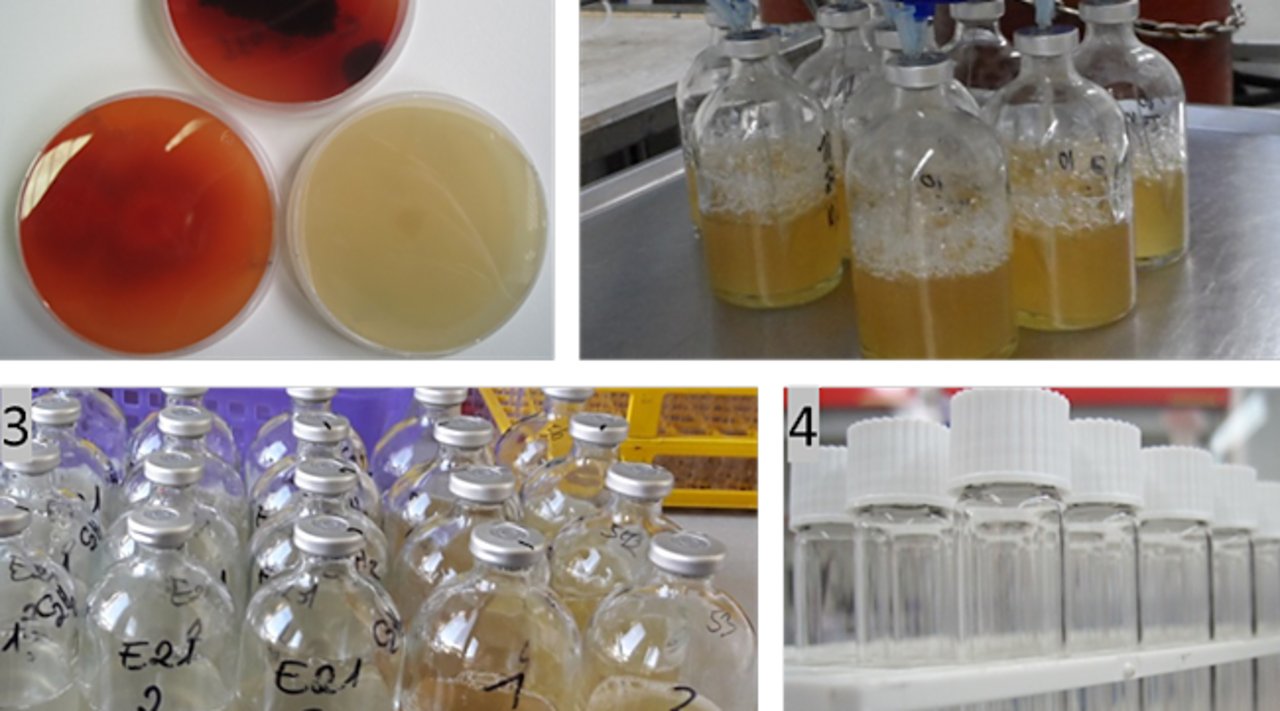Project
Control of fungal denitrification in soils

Role of fungal denitrification from N2O fluxes in soil
So far, the contribution of fungal denitrification to nitrous oxide production in soil has not been fully clarified. The aim of the project is to improving method and thus receiving a substantiated estimation.
Background and Objective
Microorganisms are capable of performing denitrification under anoxic soil conditions; meaning reducing nitrate or nitrite and thus the greenhouse gas nitrous oxide (N2O) and dinitrogen (N2) can be released. Even after decades of research, it has not yet been conclusively clarified how much fungi contribute to the production of N2O during denitrification in soil.
The latest studies have shown that probably only a few species are capable of denitrifying (Keuschnig et al. 2020). However, the contribution to the total emissions from denitrification could be high, because fungi, unlike bacteria, cannot reduce N2O any further to N2.
Because many N2O producing processes (e.g. denitrification, nitrification and codenitrification) can co-occur in soil, it is difficult to clearly determine the contribution of fungi to denitrification by N2O release from soils. Nevertheless, in order to improve modelling of N2O emissions or to develop mitigation strategies, a more precise understanding of the process is necessary.
This follow-up project aims to combine different experimental approaches and thus to develop a method that can be used to quantify N2O emissions from fungal denitrification.
Target Group
Science, Federal Ministry of Food and Agriculture, associations of agriculture and environmental protection
Approach
Based on previous studies, substrate-induced respiration with selective inhibition (SIRIN) and the analysis of stable isotopes in nitrous oxide will be used to determine the proportion of N2O produced by fungi in controlled incubation experiments. However, validation of these methods has not yet been carried out.
Therefore, it is planned to improve these methods and test for correctness of results in controlled laboratory incubation experiments. This includes checking and testing inhibitors used for bacteria and fungi and whether the isotope signatures in N2O resulting from pure cultures are comparable with those of the soil community. Part of these controlled incubations are incubations of extracted communities in sterile medium, but also in sterile soil. In addition, different soils with varying conditions (e.g. oxygen availability, temperature, carbon source, electron acceptor) will be incubated. The isotopic signatures will be measured and methods using the polymerase chain reaction (PCR) will be used to analyze fungal communities that contribute to denitrification or even the gene expression of the fungal NO reductase (P450nor). Results of fungal denitrification could potentially be included in models calculating N2O emissions.
Our Research Questions
Do the isotopic signatures of N2O from denitrifying microorganisms depend solely on the enzymes but not on soil conditions?
Can isotopic signatures of N2O and associated isotope effects be used to estimate the contribution of fungal denitrification to N2O emissions from soils?
Do differences exist between controlling factors of fungal and bacterial denitrification?
Thünen-Contact

Involved Thünen-Partners
Involved external Thünen-Partners
-
Leibniz Universität Hannover
(Hannover, Deutschland)
Funding Body
-
Deutsche Forschungsgemeinschaft (DFG)
(national, öffentlich)
Duration
5.2021 - 12.2025
More Information
Project funding number: WE 1904/8-2
Project status:
ongoing


![[Translate to English:] [Translate to English:]](/media/_processed_/6/4/csm_titel_CO2Kampagne8_afeea2273e.png)
![[Translate to English:] [Translate to English:]](/media/_processed_/4/1/csm_titel_93px_CO2Kampagne8_9b0f3354d4.png)





